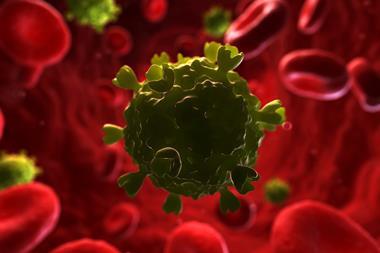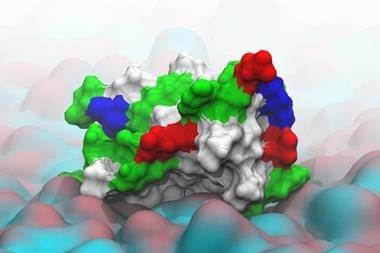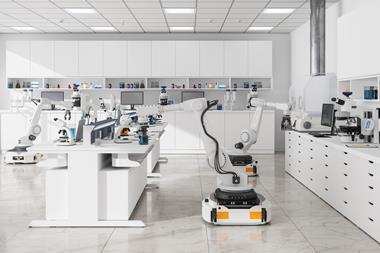Scientists use cucurbit[7]uril to rouse zebrafish from anaesthesic coma

Cucurbit[n]urils are macrocycles that can inhibit the bioactivity of certain drugs by complexing and encapsulating them to neutralise their effects. Now, Ruibing Wang and co-workers at the University of Macau and Queen’s University in Kingston, Canada, have shown that cucurbit[7]uril can encapsulate the anaesthetic tricaine within its lipophilic cavity. Tricaine acts as a general anaesthetic in cold-blooded animals and fish; in zebrafish it blocks ion channels within nerve membranes. Cucurbit[7]uril acts as a competitive receptor to remove tricaine from these channels and inhibit its anaesthetic properties. The resulting concentration gradient encourages any remaining tricaine to migrate away from the ion channel junction and into the plasma, to be snapped up by further host macrocycles.
After treating the zebrafish with tricaine, Wang’s team monitored the fishes’ cardiac function, how they swam and balanced and how much time it took to regain upright equilibrium in water and in a cucurbit[7]uril solution, to determine if, and how quickly, tricaine’s general anaesthetic effects could be reversed. It was shown that cucurbit[7]uril cuts the time taken for the fish in stage 4 anaesthesia to return to upright equilibrium by half, from 3 minutes by natural recovery to 1.5 minutes with the aid of cucurbit[7]uril.
Zebrafish often show similar biological responses to drugs as those seen in mammals and are considered to be a good model for predicting potential drug effects in humans. However, tricaine is used only as a local anaesthetic in humans. ‘In order to translate the relevance of this study to clinically meaningful models and eventually to humans, other general anaesthetic agents, such as metomidate, etomidate and ketamine, will need to be studied for their supramolecular complexation with cucurbiturils,’ explains Wang. He envisages using rats as in vivo models to bridge the gap between zebrafish and humans. ‘With promising preliminary results, we are confident that cucurbit[7]uril or similar host molecules may significantly reduce the toxic side-effects that have been plaguing the use of anaesthetics for sensitive populations, such as children and the elderly.’
According to Wang, the most challenging aspect of the work was establishing a proper general anaesthesia stage for the in vivo models. ‘Our pilot experiments have shown that it is very difficult to reverse deep anaesthesia … and attests to the importance of timely recovery from general anaesthesia after surgery.’
‘There has been interest in using cucurbiturils for medical applications since the early 2000s. While many researchers have shown in vitro that cucurbiturils can be used in drug delivery and biodiagnostics, few have shown that their system works using in vivo models’, comments Nial Wheate, an expert in the pharmaceutical applications of cucurbiturils from the University of Sydney, Australia. But he says that this particular cucurbituril is a great step forward in the commercial application of cucurbiturils: ‘After suitable preclinical testing it is easy to see how this could be applied in humans to make the use of anaesthetics both safer and reduce the recovery time of patients after treatment.’
References
This article is open access. Download it here:
H Chen et al, RSC Adv., 2015, 5, 63745 (DOI: 10.1039/c5ra09406b)












No comments yet